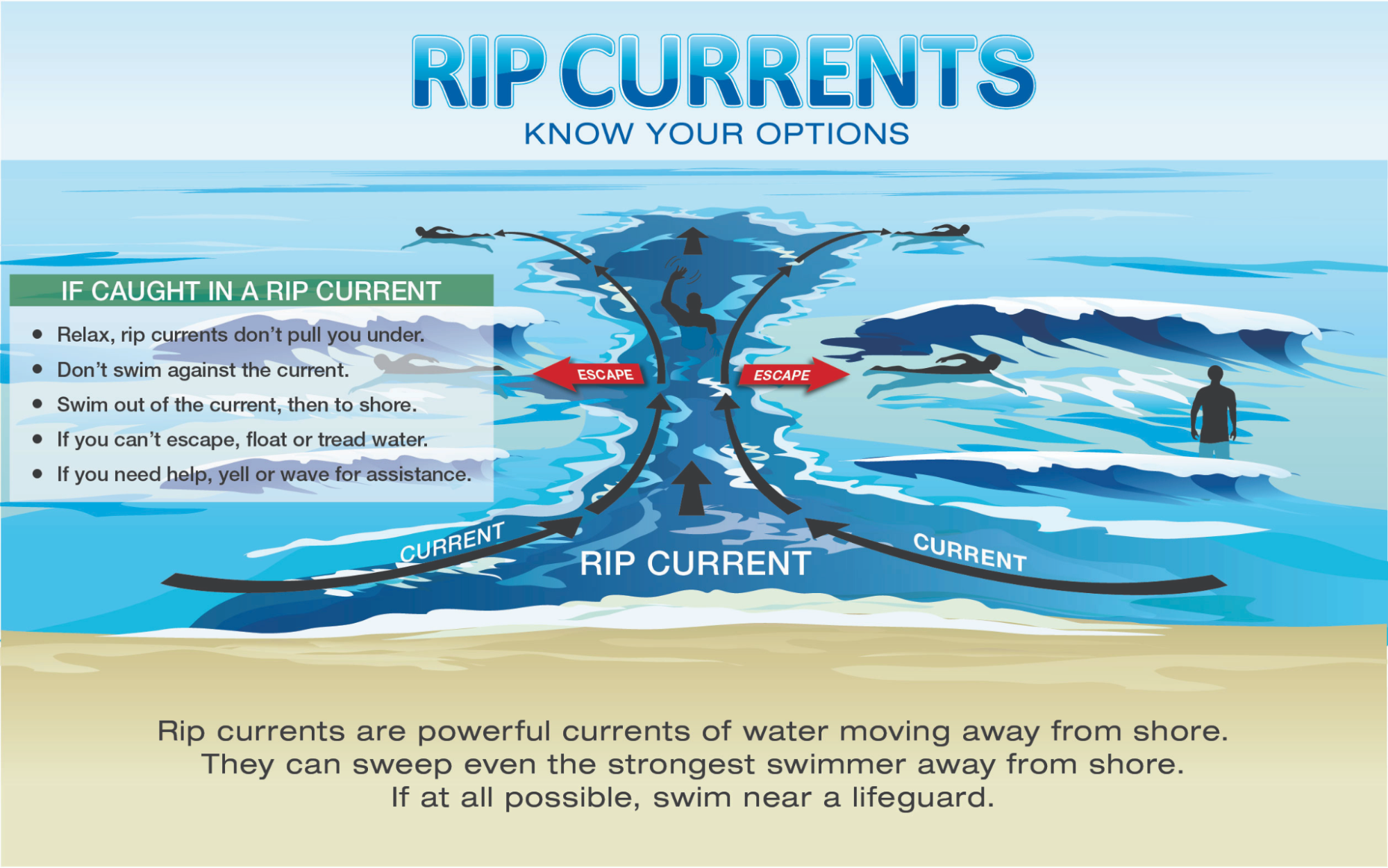 |
Big Sur, Monterey, CA
|
 |
| |
Present on many beaches every day of the year, rip currents are powerful, narrow channels of water that move quickly away from shore. Despite causing more than 100 fatalities annually in the U.S, according to the USLA, many people still do not know what rip currents are, how to spot them, or what to do if they are caught in one.
Here we debunk 7 myths about this dangerous phenomenon:
- Myth: A strong swimmer can outswim a rip current.
Fact: Measured at speeds up to 8 feet per second (more than 5 miles per hour), rip currents can be faster than an Olympic swimmer.
- Myth: Rip currents pull people under water.
Fact: A rip current will not pull you under water, but they can pull a swimmer away from the beach beyond breaking waves.
- Myth: Human chains are an effective rescue technique.
Fact: Human chains can be extremely dangerous. Rip currents may pull additional people out into the water from the chain, putting them at risk of drowning. This can quickly create a multiple-victim scenario, overwhelming trained rescuers. If you see someone caught in a rip current:
- Call a lifeguard or 9-1-1 for help immediately.
- If help is not immediately available then throw the person in trouble something that floats.
- If you must enter the water, never enter without flotation and always keep the flotation device between you and the person in trouble.
- Myth: Rip currents are always visible.
Fact: Spotting a rip current can be difficult. To check for rip currents at the beach, stand back from an elevated position, like a dune line or beach access, and look for places where waves are not breaking. Any of the following clues may indicate that a rip current is present:
- A channel of churning, choppy water;
- An area of water that is a notable difference in color;
- A line of foam, or debris moving steadily offshore; or
- A break in the incoming wave pattern
- Myth: Rip currents are only present during bad weather.
Fact: Rip currents can occur rain or shine -- even when waves of only about two to three feet high are present.
- Myth: It’s always safest to swim where the waves are smaller.
Fact: Not necessarily. A break in the waves can indicate the presence of a rip current.
- Myth: Rip currents, rip tides, and undertows are all the same thing.
Fact: While neither rip currents or undertow will pull a person underwater, undertow is a term used to describe the current beneath the surface when waves are breaking upon the shore (see glossary of rip current terms). Tides are very long-period waves that move through the ocean in response to the forces of the moon and sun. While tides can be a factor in rip current development, there is no phenomenon specifically called a “rip tide”.
Want to know more about rip currents? Visit the NWS safety page and make sure you know before you go to the beach.

